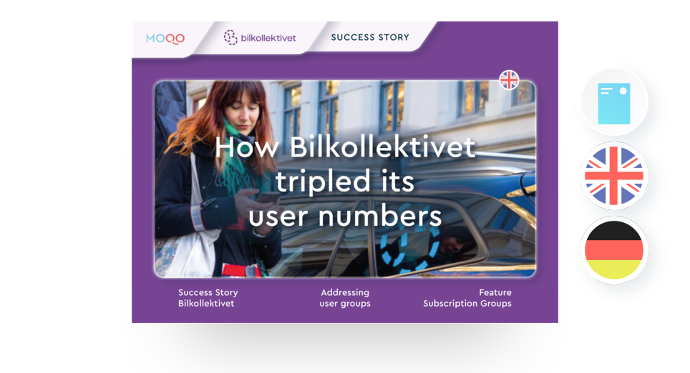Basic, Active, Comfort, Pro, Premium, Student, Company. There are many types of subscription groups that can be configured and within each group are different benefits available to the subscriber. In almost every industry, providers create offer structures that allow users to use a product via different subscriptions. What's a good reason why you, as a sharing provider, should also create such a structure? In contrast to a single subscription, which can optimally serve one usage type, a group subscription simultaneously offers attractive access to different types of usage and in return expands the potential user group. In this article, you will discover the types of Subscription Groups available, how Subscription Groups are attractive for both drivers and operators as well as how they can be mapped with the new Subscription Groups feature.
Feature Benefits for Providers and Drivers
The new Subscription Groups feature offers many benefits to you and your drivers alike. We have listed the most important ones here.
Subscription Groups for provider
Offer attractive tariffs for frequent and infrequent drivers
Long-term customer loyalty through satisfied users
Increased usage and capacity utilization
Reliability through regular income
Tariffs designed with transparency
Serve drivers in different user phases
Subscription Groups for drivers
Non-binding, low-cost starting point
Attractive for long-term usage
Caters to the future: "In case you ever need it".
Easy to upgrade between subscriptions
Long-term planning security and integration into everyday life
Transparent presentation of tariffs
Subscription Groups Feature

Setting up a tariff system that caters to different use cases is key for many sharing providers. With the new Subscription Group Feature, tariffed and untariffed subscriptions can be set up, grouped and then displayed in a transparent way to your drivers. The individual subscriptions are displayed directly in the MOQO App or your white label app. They also appear in the web portal and can be made available on your own provider website or your Exclusive Sharing Portal.
Operator admins can use the feature to make different subscriptions available even more easily and in turn can increase the number of potential users. Drivers can access the same pool of vehicles and see individualized tariffs based on their subscriptions, giving them the best tariffs for their needs. Alternating between individual subscriptions on the operator's terms is also possible.
Subscription Groups can be set up and conveniently managed in just a few steps. Exclusive use for specific user groups can also be implemented. With the Subscription Groups Feature you can expand your business model with creating unlimited offer structures.
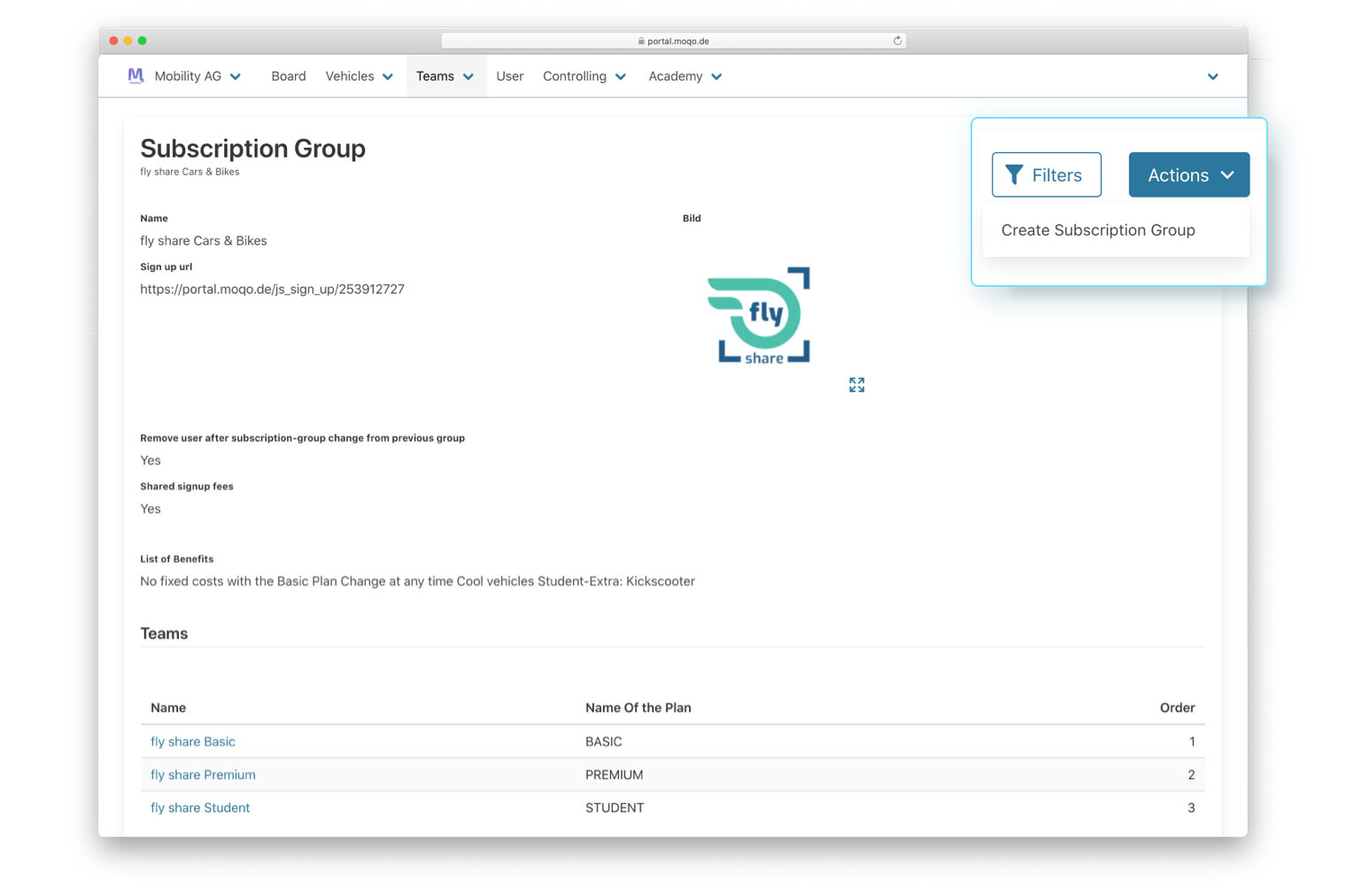
Quick setup
Subscription Groups is available for sharing providers with a PRO partnership or higher. Please contact the MOQO Customer Success Team if you would like to activate it.
MOQO partners can find information and detailed instructions on the feature in the MOQO Academy.
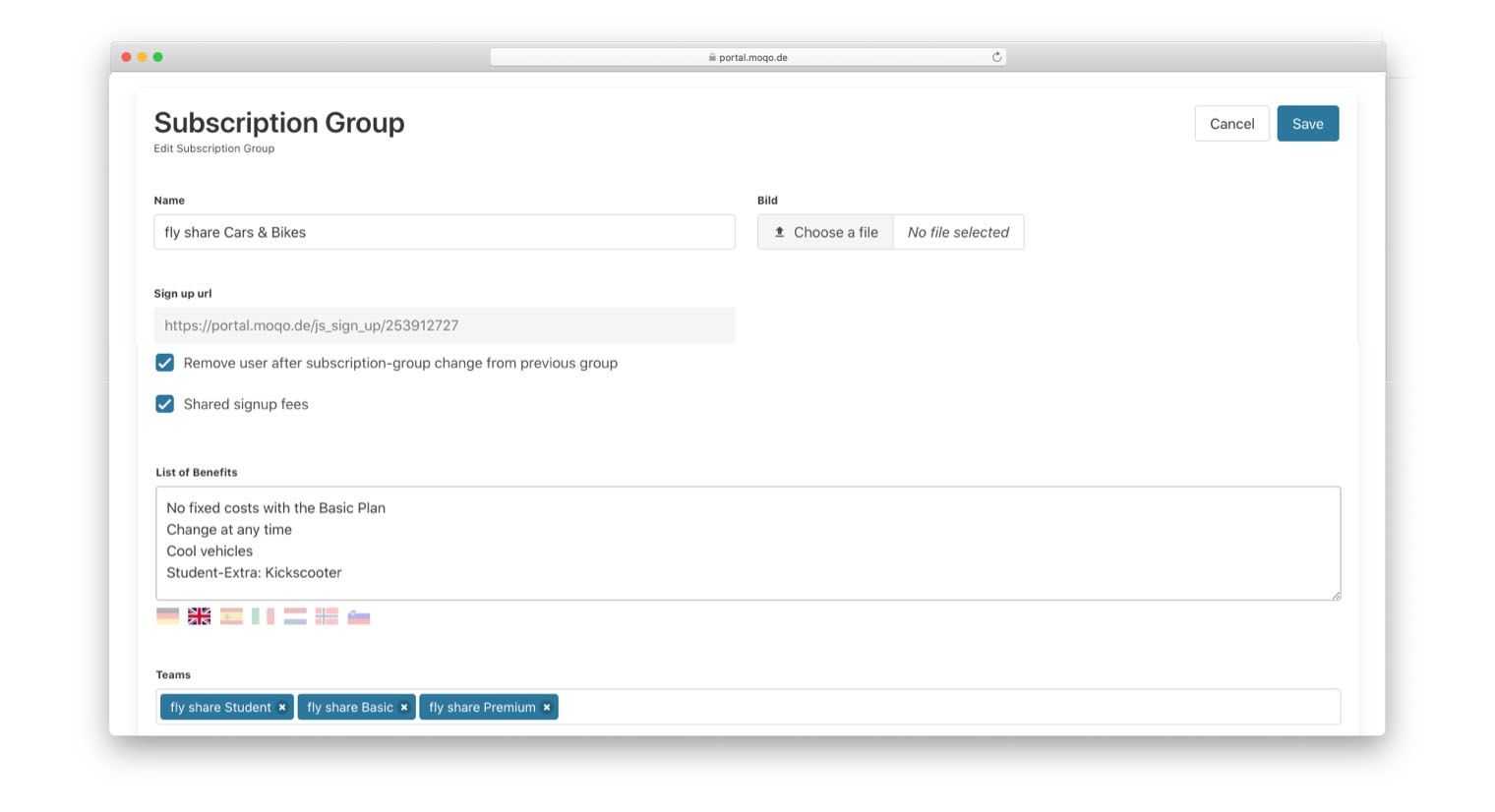
Finetune subscriptions and set conditions
Define the conditions for which your subscriptions will be used.
You have many possibilities to configure offers by setting the following elements:
Usage tariffs
Insurance packages and deductibles
Registration fees
Periodic basic fees
You use the setup of the different vehicle provisionings for the related team as well as the registration fee setting and/or monthly rental membership fee per team.
Driver’s View
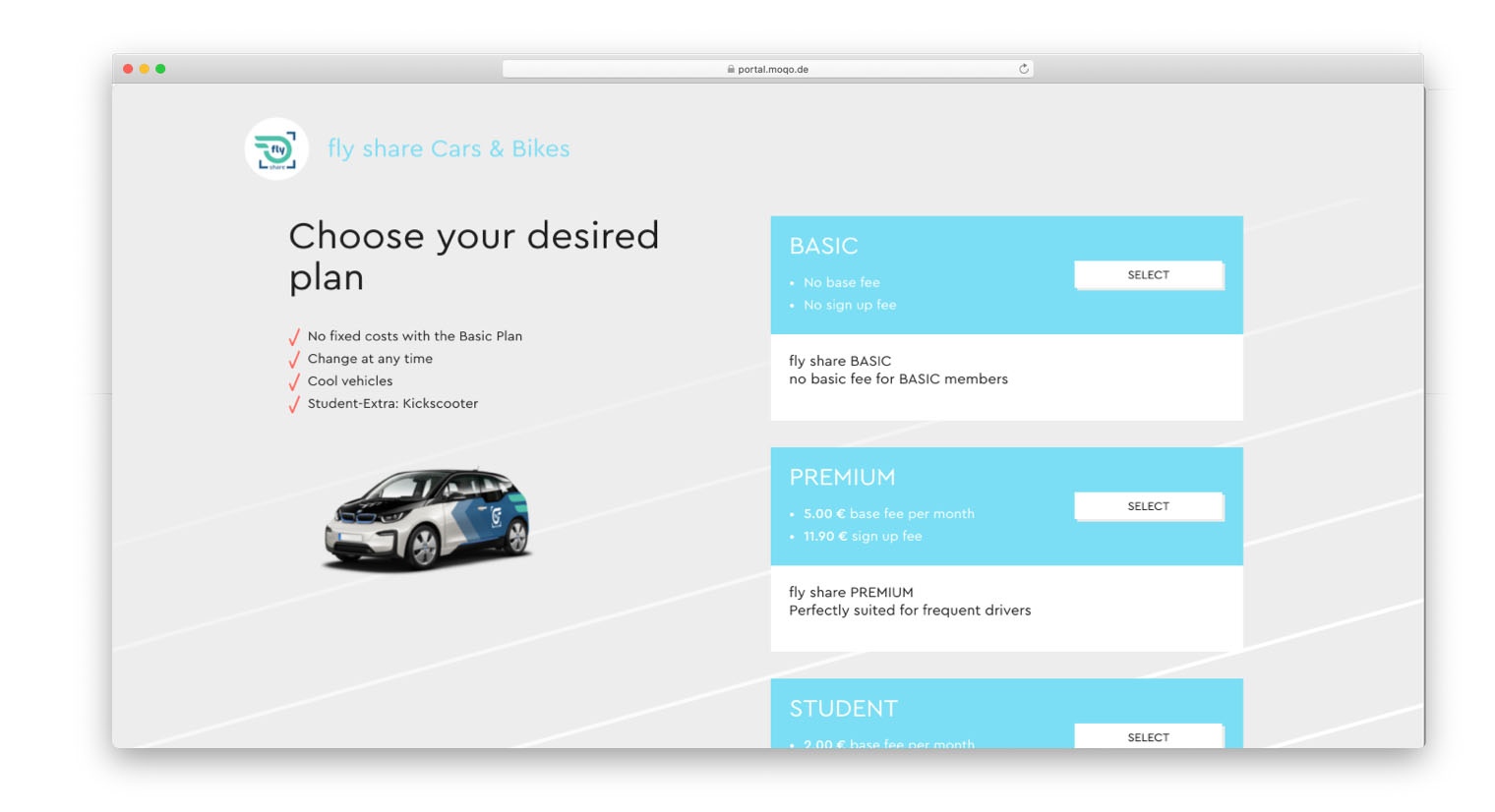
Easy access
Drivers get a transparent presentation of the individual subscriptions both in the apps and web portal. After selecting an offer, the usual steps for registration follow.
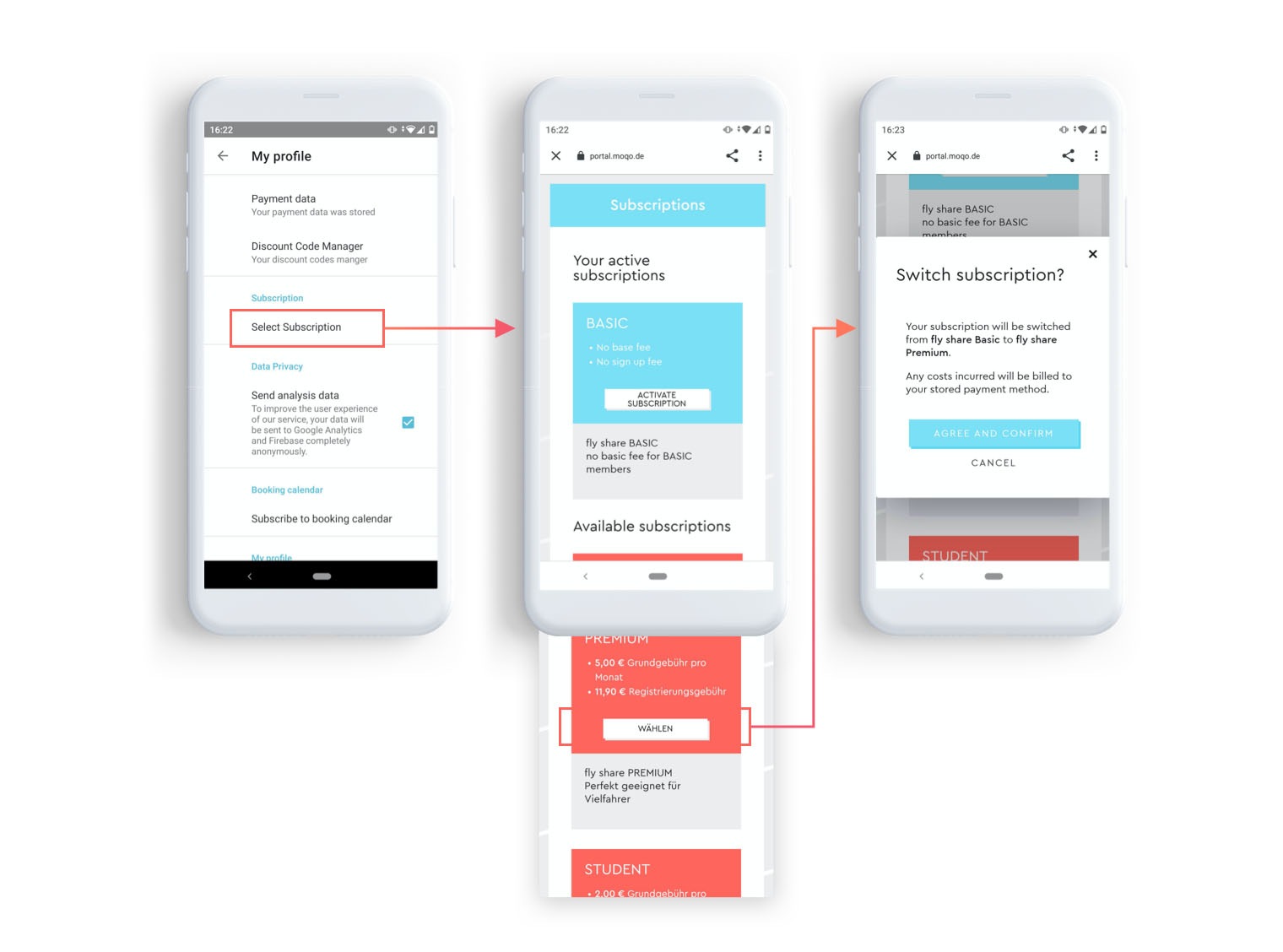
Simple switch
In just a few steps, drivers can conveniently switch between their available subscriptions via their driver user accounts. The platform takes into consideration the terms and conditions of the subscription. This enables drivers to find the best offer for their individual needs.
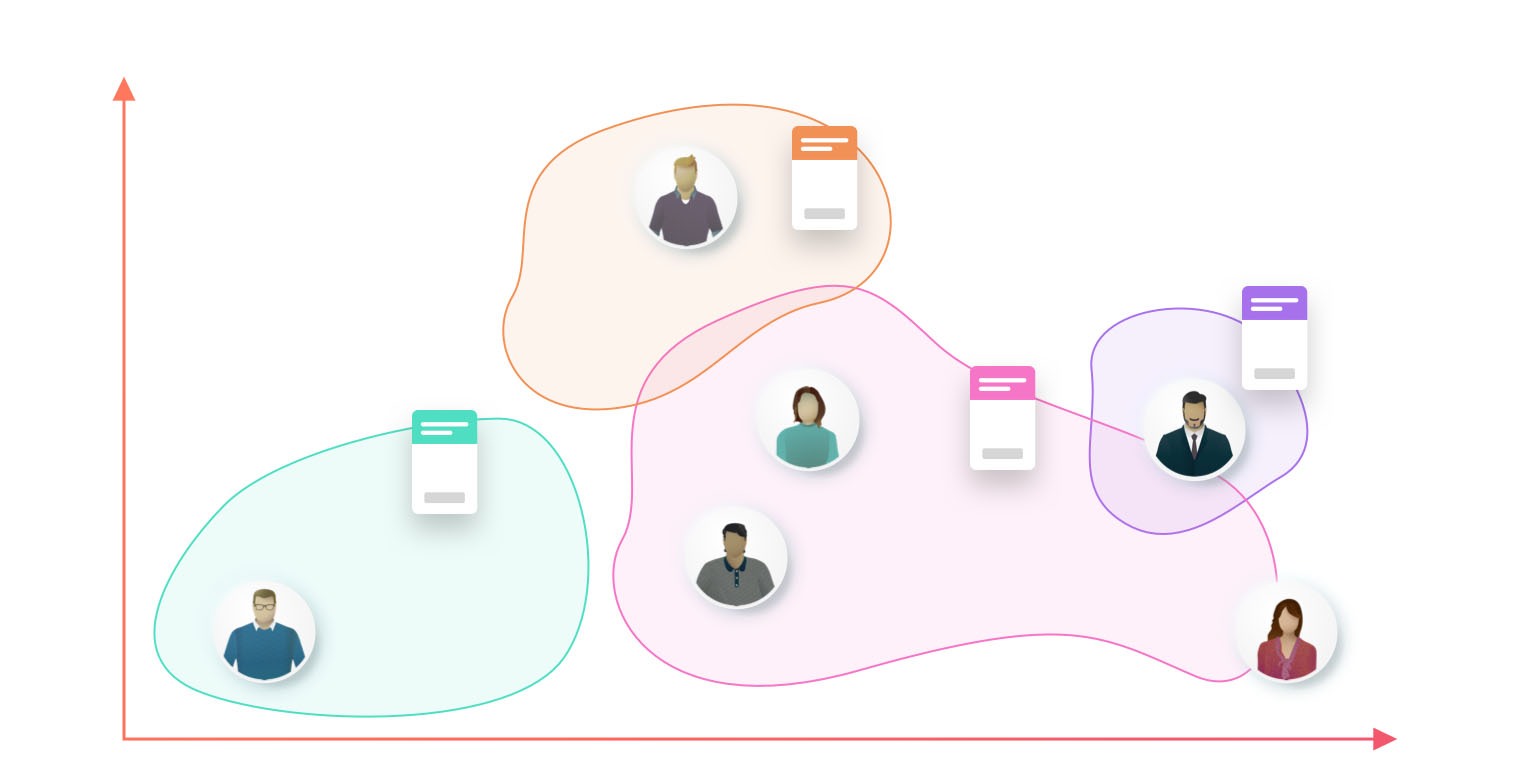
Strategic Subscription Planning
A Subscription Group can hardly be seen as a detached collection of individual subscriptions. On the contrary, the available subscriptions influence each other. If you plan your subscriptions strategically, they’ll promote each other and steer users to choose the most optimal subscription option. If you plan your subscriptions strategically, they’ll promote each other and steer users to choose the most optimal subscription option.
Subscription options
The idea of having multiple subscription options ensures that as many users as possible are served based on their usage frequency. Infrequent, moderate and frequent users are grouped into individual “user groups” and served with suitable rates or subscriptions. Sensible scaling depends on the circumstances and objectives of your sharing offer and the scale should be optimized on a regular basis. In general, low basic fees and higher usage costs apply to infrequent drivers, while higher standard fees and lower usage costs apply to frequent drivers. Furthermore, multiple subscription options help drivers to find an optimal balance between these two values and at the same time, increases the complexity.
Address early adopters
Setting up attractive tariffs and subscriptions for the group of drivers who are the first to "take up" your offer (early adopters) can help to tap into additional, hesitant target groups. It makes sense to identify these groups and include them in your subscription planning.
Distribute utilization
Your vehicles will not be booked equally at any given time. Popular time slots are usually weekends or the early evening hours. By designing your subscriptions, you can make less popular time slots more attractive for certain user groups and in turn increase utilization at these times as well.
Promotional effects through additional subscriptions
Even subscriptions that are less utilized can have a positive effect. It is no coincidence that the subscription option priced in the middle is often referred to as "most selected". This is because most people don’t need the most expensive offer. At the same time, users rarely choose the cheapest subscription because they want a higher range of services so that they do not "come up short".
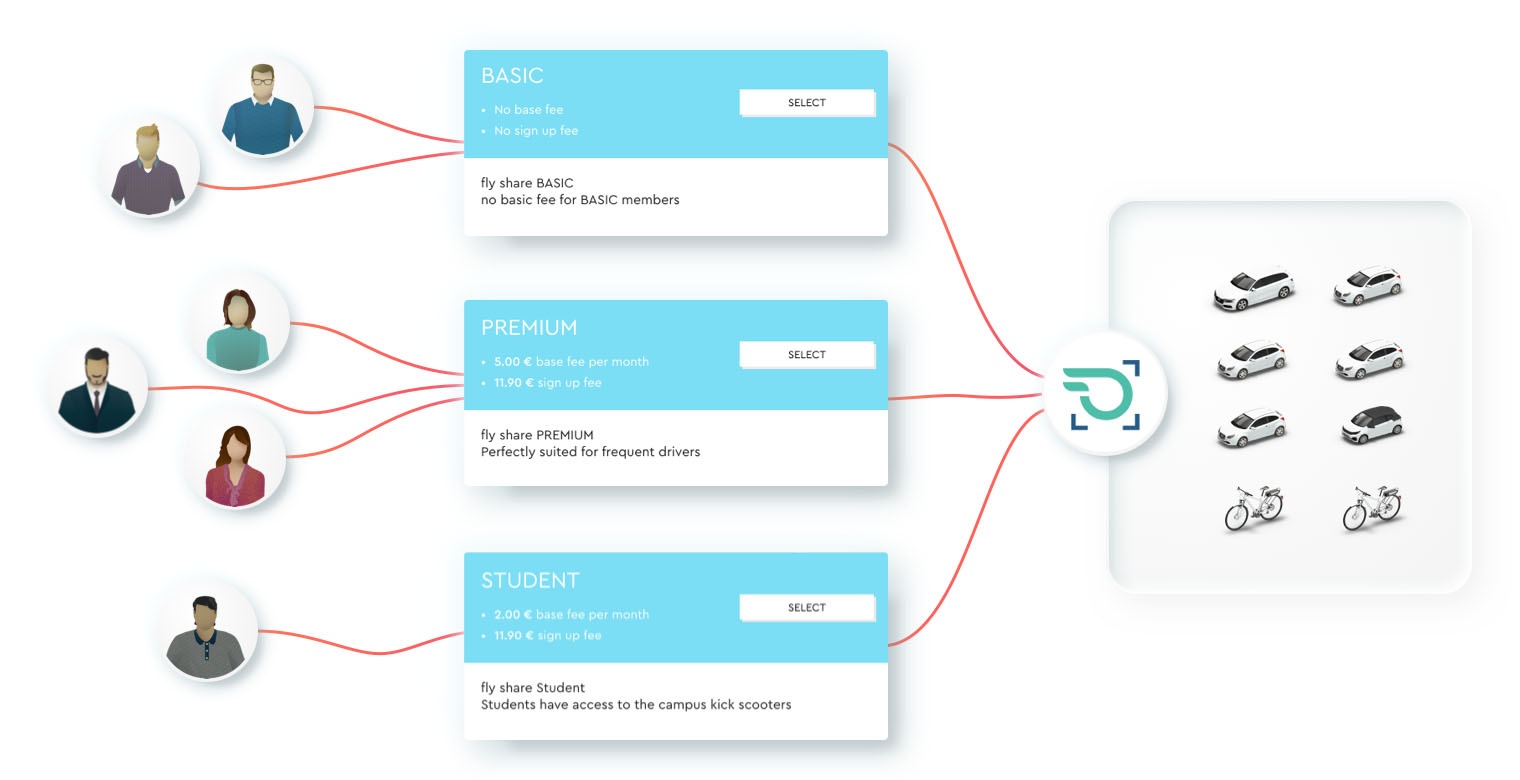
Identify and Serve Use Cases
People who have a need for mobility lay the foundation of your success. To target these people, you should research a specific location's mobility needs, the use cases which can be served there and whether any special conditions exist, such as a train station.
Because you will usually find various use cases at a given location, Subscription Groups can provide the targeted support you need. A single subscription can focus on a specific type of use or a conglomerate of multiple subscriptions offers a hybrid solution for various types of use. By leveraging additional subscriptions, represented as Subscription Groups, you can create tariff structures that appeal to different use cases.
In terms of subscription structures, there are recurring patterns that can serve as a basis for your particular use case. It should be noted that drivers generally do not behave in a constant manner and can go through different stages in relation to your service, which is described later.
Different usage types can also be served within the Tariff Editor of a PRO partnership and on. The distinction takes place through the design of the tariffs.By leveraging between the Tariff Editor and the Subscription Group Setup intermediate stages can be added.
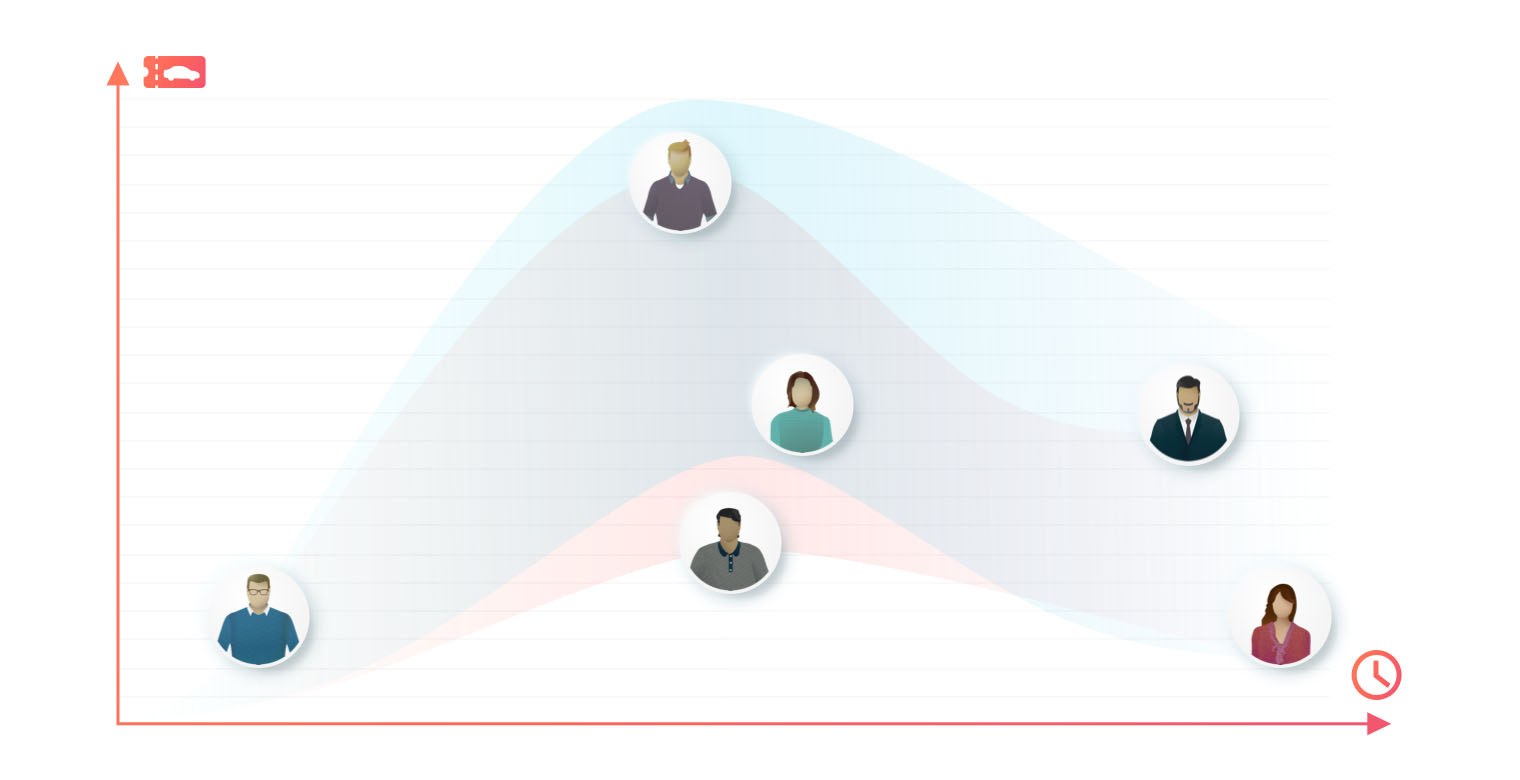
Shared Mobility Usage Types
Potential drivers for your sharing offer are rarely composed of a homogeneous group. Common classifications from other industries are as follows:
First-time users
Especially after the launch of your sharing offer, many users will be curious but hesitant. Usually, they have already found a solution to serve their mobility needs. Your new sharing offer competes with existing solutions, offers attractive subscriptions for long-term use and at the same time offers reasonable rates for a first-time test.
From occasional users to frequent drivers
The duration of use often provides the basis for building the subscription structure. A tariff with no or only a small basic fee is provided for infrequent drivers, in which revenue is then generated through higher time costs and distance costs. On the other hand, frequent users are served by a tariff with a high basic fee and low time and distance costs. Additional subscriptions can be used to introduce intermediate tiers, which are aimed at groups with different usage times.
According to use cases
If you have a wide range of vehicles available in your sharing offer, it is also possible to design subscriptions based on the use of individual vehicle types. For example, low-cost access to cars can be added alongside bike use, which would benefit those who can't ride a bike should the weather be bad.
Special rates through collaborations with local organizations
Through partnerships, exclusive offers generate additional potential business. Special use cases arise from the affiliation of a potential user to a local organization. These use cases might pertain to employees of a company, tourists in hotels or residents of a real estate. Partnerships between sharing providers and such organizations can also be mapped within a subscription group.
Special rates through users status
Many industries provide special deals for certain groups through subscription offers. Oftentimes these offers are aimed at students (as higher-paying users in the future and "early adopters") or retirees (as a group that often creates bookings in less frequented time slots).
Discounts to overcome entry hurdles
First time users don't want to sign a subscription with high membership fees but would prefer to get a good price to try the service for the first time. If they use the basic subscription they are subjected to higher usage fees. Therefore the discount codes can alleviate the hesitancy and offer them a good price to try the service for the first time with just the basic subscription.
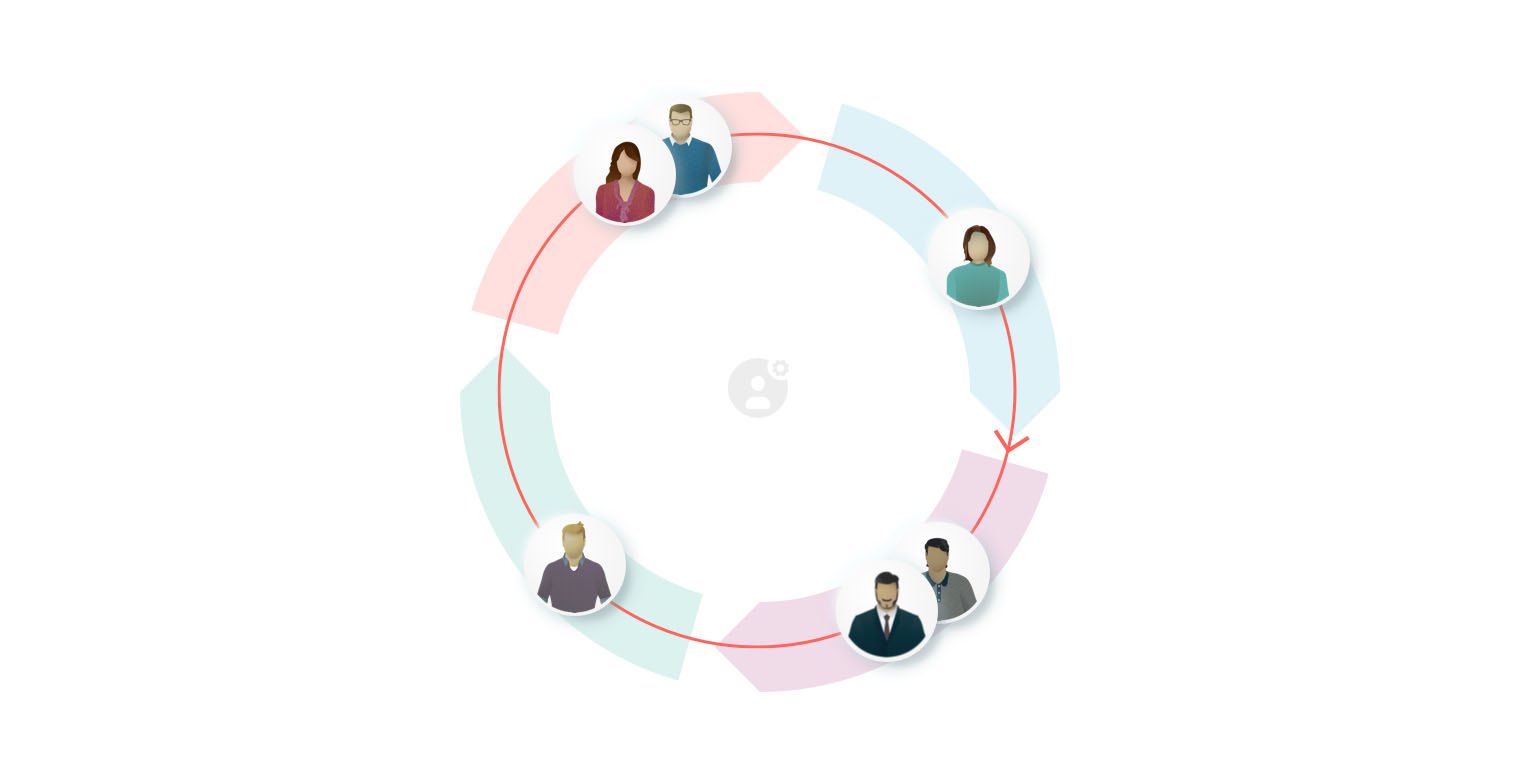
Considering the Customer Life Cycle
Users rarely show their full customer potential at the beginning and instead their usage increases slowly. The role your sharing service plays in this process can only influence them to a certain extent. However, considering the following user phases can give you an advantage.
Welcome phase
At the beginning, users test your service in order to evaluate the potential of integrating the service into their everyday lives. Lowering entry hurdles, positive user experiences and referrals from other users are very important.
Setup phase
Most users are slow to incorporate shared mobility into their daily lives. Throughout all stages, it is important to provide suitable offers as well as the assurance that the service will be maintained.
Declining use and unsubscribes
You can't please everyone. A decline in use by individual users is therefore not a disaster. However, such a situation becomes an opportunity to ask your users for feedback to evaluate your potential for improvement.
Reactivation
It is also natural for users to sometimes forget about your service, even though they actually enjoy using it. In this situation, periodic reactivation campaigns and surveys help to win back the users.
Expanding usage scenarios
Even among drivers who have already found a reliable partner in your service and are regular users, there is still untapped potential. The best way to identify this potential is by doing surveys and research, which can then be used to finetune your subscriptions.
Subscription Groups at a Glance
Subscription Groups increase your potential user base by combining different offers for your vehicle pool. Drivers receive a transparent set of offers and the opportunity to find the best possible access to your vehicles, so that you, the sharing provider, have satisfied users in the long run. From a PRO partnership on, you can group offers and manage them efficiently.


